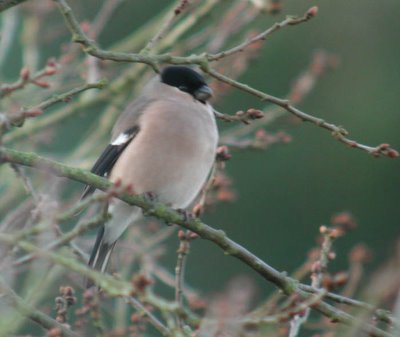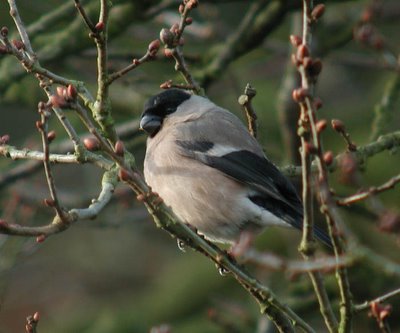


I am still thinking that 4 or so of the Bullies at Walesby are probably Northern birds 2-3 males and 2 females) but I have heard no truly identifiable call apart from one from a male and a female which sounded like some of the 94 coastal birds---looking at the BB paper which some people may have received recently, and all should subscribe to!, these photos show birds with a few features associated with Northern but which are not diagnostic though in combination may mean more than just the odd solo feature--upper edge to greater covert bar with saw-tooth effect--little contrast between upper and under in females (note one of the females photod is clearly a british bird, sharp contrast between pink (reddish) cheeks of males and blue tinged grey uppers, large and bulky looking appearance (very subjective), and note in one of the female shots a white wedge on the inner web of the underside of the outer tail feathers--this is a feature I have never seen on a UK bird but did note on a bird at Pyes Hall in Oct 1994--it is mentioned in the BB paper where it states that 18% of males and 26% of females in Finland and Sweden showed white in the tail and 17-20% of 1100 birds trapped in central Norway had some white---initially I was told that this was never shown by UK Bullfinches but I see that the BB paper mentions 2 of 30 in the BM examined by Martin Garner--it would be interesting to hear if any ringers in the county have ever found a Bullfinch with white in the tail and this may give a better representation of whether this is a feature of British birds and how common it may be---
No comments:
Post a Comment